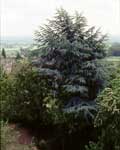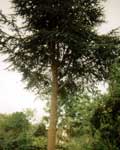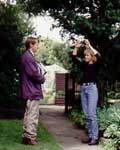Tree SurgeonsUndercover Gardening Which? readers investigate how to find the best tree surgeons in your areaMost of us will need to call upon the services of a tree surgeon at some time or another. But unless one has been personally recommended, or you have direct experience of their work, how can you be sure that the one you choose will carry out a decent job? Earlier this year we set out to find the best way of selecting a competent and trustworthy tree surgeon. We asked five Gardening Which? readers to go undercover and call in several companies to offer advice, and provide a quote for work on a tree in their garden. What the visiting tree surgeons didn't know is that a top tree consultant had already made a personal visit to each of our case studies. He produced a detailed report, including legal advice concerning protected trees, a survey of any health problems, and guidance about potential structural issues relating to nearby buildings. He then gave each tree owner specific advice on the work that needed to be carried out, as well as how it should be undertaken. Our case studies contacted at least four tree surgeons each. For the purpose of our trial, we categorised them into four groups, depending on their qualifications and where they advertised. Most local planning authorities (LPAs) supply a list of tree surgeons they regularly use for public work, and so the first group was the case study's local council's list. The second was tree surgeons on the Arboricultural Association nationwide register of approved contractors (see Logos to look out for). Third was companies advertising in the Yellow Pages with other tree association logos in their advertisement. And finally, they contacted a contractor advertising in their local paper. After each visit, the case studies filled in an in-depth questionnaire on each of the tree surgeons, detailing the advice they had been given. They then chose which one they wanted to do the work.
Logos to look out forAdvertisements in the press and Yellow Pages often carry logos affiliating tree surgeons with a number of different associations. But the meaning of these logos depends on the association concerned. To become an Arboricultural Association (AA) approved contractor, for example, a company must go through a rigorous assessment every five years (see logo 1). They also have to prove that they have adequate insurance, and use the correct equipment. The International Society of Arboriculture (ISA), on the other hand, has two logos - one for ordinary members who haven’t undergone an assessment (logo 2), and another for Certified Arborists who are regularly examined (logo 3). Members of the National Arborist Association (NAA) and the Forestry and Timber Association (formerly the Association of Professional Foresters) do not go through any formal examination before they are accepted. This does not necessarily mean that all non-AA- or ISA-certified tree surgeons should be discounted, however, as the cost of applying can be prohibitive to small companies. In addition, despite many of the other organisations not examining the tree surgeons, it is likely that any individual who joins an arborist association does have a long-term interest in tree work and has probably had some sort of formal training.
| |||
Stately Oak in Need of AttentionGrowing at the front boundary of Charles Stephenson's garden in Wrecclesham, Surrey, is a mature oak tree. The house was built about 30 years ago, and it was around that time that the tree was damaged at its base. This has since resulted in decay and a hole in the base of the trunk. Both Charles and his neighbours wanted to save the tree, but were concerned about the possibility of it falling down in a gale. Action planAlthough the possibility that this tree might come down in a storm could not be dismissed, our tree expert thought it highly unlikely. However, there was some cause for concern, and he suggested that the tree should be monitored annually for further decay. For now, he thought it would be a good idea to thin the crown by about 15 per cent to reduce its weight and wind resistance. This selective removal of branches throughout the tree would decrease the density without significantly altering the tree's shape or size. It would also result in less new growth than reducing the overall height of the tree. In three to five years' time further work may be necessary.  Advice receivedThis mighty oak received much praise from visiting tree surgeons, most of whom were unhappy about doing any work whatsoever on the tree. One recommended calling in a consultant to test the strength of the base, while another, who turned out to be a registered consultant with the Arboricultural Association, gave a free and detailed consultation, suggesting that crown thinning be carried out in approximately three years' time. VerdictCharles, with some reluctance, decided to have the work done. He chose an Arboricultural Association-approved contractor who advised a 15 per cent crown thinning, which cost £530. We were pleased to find that some tree surgeons do not always recommend work be carried out, and were impressed that a consultant associated with a tree-surgery company, both waived the consultancy fee and did not try to make it up by specifying work. This was a difficult case, but overall both our tree expert and Charles welcomed the cautious response by the tree surgeons. | |||
Ugly SycamoreBrionie Leigh moved into her north London house ten years ago. In the back garden was a sycamore, which had been pruned heavily over the years. Brionie's property survey stated that, as the surrounding houses were built on clay soil, she would be responsible for having the sycamore pruned, to ensure nearby buildings wouldn't be affected by subsidence. Brionie lives in a conservation area, which meant that every two years she had to apply to her local authority to approve the pruning, then pay a tree surgeon around £150 a time. Action planBrionie resented having to foot the bill for this, particularly as the tree was so ugly. Our tree expert agreed that it was unsightly and didn't enhance the local environment. The tree also seemed to be causing structural problems to a neighbour's garage, with the trunk slowly pushing into the side wall. Normally, if you want work done on a tree in a conservation area, you have to apply for permission from your local planning authority, which could take up to six weeks. However, if a tree becomes dangerous, or is a legal nuisance, you can give them just five days' notice. This is what Brionie did, and after a quick response from her local tree officer, including a personal visit, she was given permission to have it felled within a matter of days. And because there were already several other trees in Brionie's garden, the usual prerequisite of having to plant another was not enforced.  Advice receivedNone of the tree surgeons that visited Brionie identified that this tree was exempt from normal conservation area notices. Two out of the four knew that Brionie would have to apply for permission to have any work done, and both were prepared to do this on her behalf. VerdictQuotes for having the 50-year-old sycamore felled varied between £282 and £450. The cheapest quote was from an Arboricultural Association-approved contractor, who was duly asked to carry out the work. SubsidenceBrionie needed to have her tree pruned regularly because of the risk of subsidence to neighbouring property. If you would like to find out more about subsidence, contact us at Gardening Which? PO Box 44, Hertford X, SG14 1SH for a free booklet. | |||
Dying Cherry and a Lopsided CedarAlexia Monroe lives in a conservation area in Gloucestershire. Earlier this year she applied to have some work done on a couple of trees in her garden. Her local tree officer visited and agreed that a cherry tree at the end of her garden was dying and should be cut down. Because the blue Atlas cedar next to it would then look lopsided, some remedial work could also be done. Action planOur tree expert agreed with the tree officer: the 50-year-old cherry had a spiral wound on its main branch and a large cavity in the trunk. The treatment of the blue cedar was more difficult due to the cherry having grown into its side. Like most conifers, cedars do not readily produce new shoots from old wood, so the tree would not grow out to fill the gap left by the cherry. A cautious approach was needed, taking off some of the lower branches from the opposite side, while cutting back the tips of some of the higher branches.   Advice receivedThe four tree surgeons that visited were of the same general opinion as our tree expert, and all gave the correct advice on the type of work that should be carried out. Alexia was very lucky with her choice of tree surgeons, and it's likely that any of them would have done a decent job. VerdictIn the end, it came down to the confidence Alexia had in the different tree surgeons to treat the cedar tree sympathetically. The most expensive was an Arboricultural Association-approved contractor quoting £458. Alexia actually chose a local tree surgeon who was also the cheapest, at just £188. Working for the best part of a day, two men made a good job of felling the cherry and levelling up the cedar. They even stacked the logs and spread chippings under the trees to suppress the weeds. | |||
Troublesome YewChris Withers' pretty Hertfordshire garden was shaded heavily by a vigorous yew tree. Her neighbours were also concerned, as the tree was right next to their garage. However, providing it was not causing a problem to the garage, Chris wanted to save the tree, but stop it from getting any bigger. Action planOur expert reassured Chris that the tree's roots would not be strong enough to cause direct damage to the garage. And because it is still fairly small, the risk of the tree causing subsidence was also low. The shade cast by the tree was therefore Chris's only concern, and our expert suggested a couple of options to combat this. The first was to reduce the height and spread of the crown by around a metre. The mushroom-shaped tree would then respond by sprouting, so a tree surgeon would be needed every year or so to keep the new shape. The second option was more drastic - turning the tree into a dense, closely clipped bush. Because yews will tolerate heavy pruning, Chris could transform her 40-year-old tree into an attractive column-shape which she could maintain herself.  Advice receivedLike some of our other case studies, Chris had problems in getting tree surgeons to visit. Many simply didn't bother replying to her messages. Out of the ones that did visit, Chris's opinion of them was based more on how they presented themselves on the day, rather than their tree association affiliations. Despite none of the tree surgeons suggesting cutting the yew right back to form a rectangular bush, all responded favourably to carrying out this work when Chris proposed it. VerdictThis fairly small job was quite cheap, with prices varying from £53 to £94. Chris opted for the Arboricultural Association-approved tree surgeon who made an excellent job of cutting back the yew to around the height of the garage. Chris is extremely happy with the extra light that now floods into the garden, and is looking forward to getting out her hedging shears. | |||
Sickly Old AppleThis mature 'Bramley's Seedling' apple, growing on the site of an old orchard in Mark Broadbent's garden, is thought to have been there since his house was built in 1925. Mark was keen to keep the tree, despite the fact that there were many dead and dying branches throughout. Action planOur tree expert inspected the old Bramley and was initially concerned that it might be infected with honey fungus. In this case, however, it turned out that the underlying cause for the dieback was a nearby line of beech trees which cast a huge amount of shade. Probably planted with the intention of forming a low-growing hedge, they had been left unattended and were now around ten metres high, well above the canopy of the apple. Apple trees are able to withstand heavy pruning, but this is best avoided with older ones, as it can make them more susceptible to disease. Our expert recommended removing all of the dead wood, and thinning the growth by about 10-15 per cent. Further limited work would then need to be carried out in subsequent years. To give the apple tree a fighting chance, Mark was also advised to reduce the height of the line of beech over two to three years.  Advice receivedThe advice provided by the tree surgeons differed widely. A couple of them got it right, while one local contractor admitted he didn't know much about fruit trees or tree diseases and even thought the beeches were hornbeams! An Arboricultural Association-approved contractor even tried to sell Mark a 'special injecting fertiliser system' over the phone without actually seeing the tree! VerdictThe tree surgeon that most impressed Mark was the one who listened to his wish to keep the tree, and came up with a strategy to save it. The total cost for this AA-approved contractor, for both pruning the apple and reducing the height of the beech, came to £550. | |||
Our Advice
Tree protectionLocal planning authorities (LPAs) have the power to protect trees, and any unauthorised work done on a preserved tree can result in a hefty fine. Merely cutting off a branch from a tree with a tree preservation order (TPO) could result in a £2500 fine, and chopping a tree down may land you with a bill of £20,000. Many trees are protected because they are in a designated conservation area. Here, you must give the LPA six weeks' notice in writing before any work is done. This allows the tree officer time to consider whether a TPO should be made. But, as illustrated by Brionie Leigh's case, there may be ways round this. It is always best, therefore, to contact your LPA or tree officer direct to check on the status of a tree before any work begins. If there is a special tree in your garden, road or even neighbour's garden that you want to protect, it is possible to apply to have a TPO served on it. To do this, contact your LPA by phone and, for particularly important trees that are under immediate threat, it is possible to have a TPO served on the same day. | |||
ContactsArboricultural Association Forestry & Timber Association International Society of Arboriculture National Arborist Association |